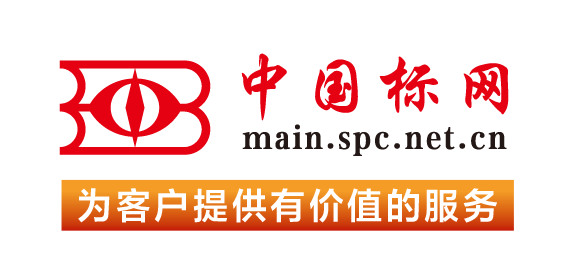【国外标准】 Standard Test Method for Shock Attenuating Properties of Materials Systems for Athletic Footwear
本网站 发布时间:
2024-02-28
- ASTM F1614-99(2006)
- Withdrawn, Replaced
- 定价: 0元
- 在线阅读
开通会员免费在线看70000余条国内标准,赠送文本下载次数,单本最低仅合13.3元!还可享标准出版进度查询、定制跟踪推送、标准查新等超多特权!
查看详情>>
适用范围:
This test method is used by athletic footwear manufacturers both as a tool for development of midsole material systems and as a test of the general characteristics of the athletic footwear product (see 1.4-1.6.2 and Notes 1-6). Careful adherence to the requirements and recommendations of this test method shall provide results which can be compared between different laboratory sources.Dynamic data obtained by these procedures are indicative of the shock attenuating properties (see 1.5) of the material systems under the specific conditions selected.This test method is designed to provide force versus displacement response of materials systems for athletic footwear under essentially uniaxial compression conditions at impact rates, which are similar to that for heel strike in normal running movements.2 ,3 That is, peak forces of up to 2 kN (450 lb) in times of 10 to 20 ms.The peak or maximum values of force, pressure, displacement, and strain are dependent on the maximum energy applied to the specimen. These values are normalized to provide comparative results for a reference maximum energy applied to the specimen of 5 J.Shock attenuating characteristics are strongly dependent on specimen thickness and prior history of force application. Therefore, results should be compared only for specimens of essentially the same thickness and prior impact conditioning (see Notes 3-6). There are no currently acceptable techniques for normalizing results for specimen thickness variations.Shock attenuating values (see 1.5) determined by this test method, for materials systems of athletic footwear, may not correlate with the similar values experienced by a runners heel or foot.1.1 This test method covers the measurement of certain shock attenuating characteristics, rapid rate force-displacement relationships, of materials systems employed in the midsole of athletic footwear intended for use in normal running movements. This test method covers three different procedures for performance of the rapid rate force application: Procedure A for falling weight impact machines, Procedure B for compression force controlled machines, and Procedure C for compression displacement controlled machines.1.2 The material system response for rapid rate force application may be different for each of the three procedures of this test method.1.3 This test method is empirically based on the use of an 8.5-kg mass dropped from 50 mm (1.97 in.) to generate peak compressive forces which are comparable to that experienced by a midsole in heel strike tests for normal running movement., This requires the specimen to be rigidly supported and the energy to be delivered through a 45-mm (1.8-in.) diameter flat tup.1.4 This test method imposes an impulse to generate a rapid rate compressive force-displacement hysteresis cycle and evaluates shock attenuating characteristics of the specimen. The maximum energy applied to the specimen occurs at peak displacement and must be within 10 % of a reference value that is used to normalize the data for comparative purposes.
标准号:
ASTM F1614-99(2006)
标准名称:
Standard Test Method for Shock Attenuating Properties of Materials Systems for Athletic Footwear
英文名称:
Standard Test Method for Shock Attenuating Properties of Materials Systems for Athletic Footwear标准状态:
Withdrawn, Replaced-
发布日期:
-
实施日期:
出版语种:
- 推荐标准
- ASTM 51401-21 Standard Practice for Use of a Dichromate Dosimetry System
- ASTM 51956-21 Standard Practice for Use of a Thermoluminescence-Dosimetry System (TLD System) for Radiation Processing
- ASTM A1010/A1010M-24 Standard Specification for Higher-Strength Martensitic Stainless Steel Plate, Sheet, and Strip
- ASTM A1016/A1016M-24 Standard Specification for General Requirements for Ferritic Alloy Steel, Austenitic Alloy Steel, and Stainless Steel Tubes
- ASTM A105/A105M-24 Standard Specification for Carbon Steel Forgings for Piping Applications
- ASTM A1064/A1064M-24 Standard Specification for Carbon-Steel Wire and Welded Wire Reinforcement, Plain and Deformed, for Concrete
- ASTM A108-24 Standard Specification for Steel Bar, Carbon and Alloy, Cold-Finished
- ASTM A1080/A1080M-24 Standard Practice for Hot Isostatic Pressing of Steel, Stainless Steel, and Related Alloy Castings
- ASTM A1090/A1090M-19(2024) Standard Specification for Forged Rings and Hollows for Use as Base Plates in Power Transmission Structures
- ASTM A1115/A1115M-24 Standard Practice for Construction of Mechanically Stabilized Earth Walls with Inextensible Soil Reinforcement
- ASTM A1128-24 Standard Specification for Stainless Steel Shielded, Rubber Gasketed Couplings Having an Integral Restraint Feature for Joining Hubless Cast Iron Soil Pipes and Fittings Where External Restraint Is Required
- ASTM A179/A179M-24 Standard Specification for Seamless Cold-Drawn Low-Carbon Steel Heat-Exchanger and Condenser Tubes
- ASTM A234/A234M-24 Standard Specification for Piping Fittings of Wrought Carbon Steel and Alloy Steel for Moderate and High Temperature Service
- ASTM A242/A242M-24 Standard Specification for High-Strength Low-Alloy Structural Steel
- ASTM A249/A249M-24a Standard Specification for Welded Austenitic Steel Boiler, Superheater, Heat-Exchanger, and Condenser Tubes
 我的标准
我的标准 购物车
购物车 400-168-0010
400-168-0010














